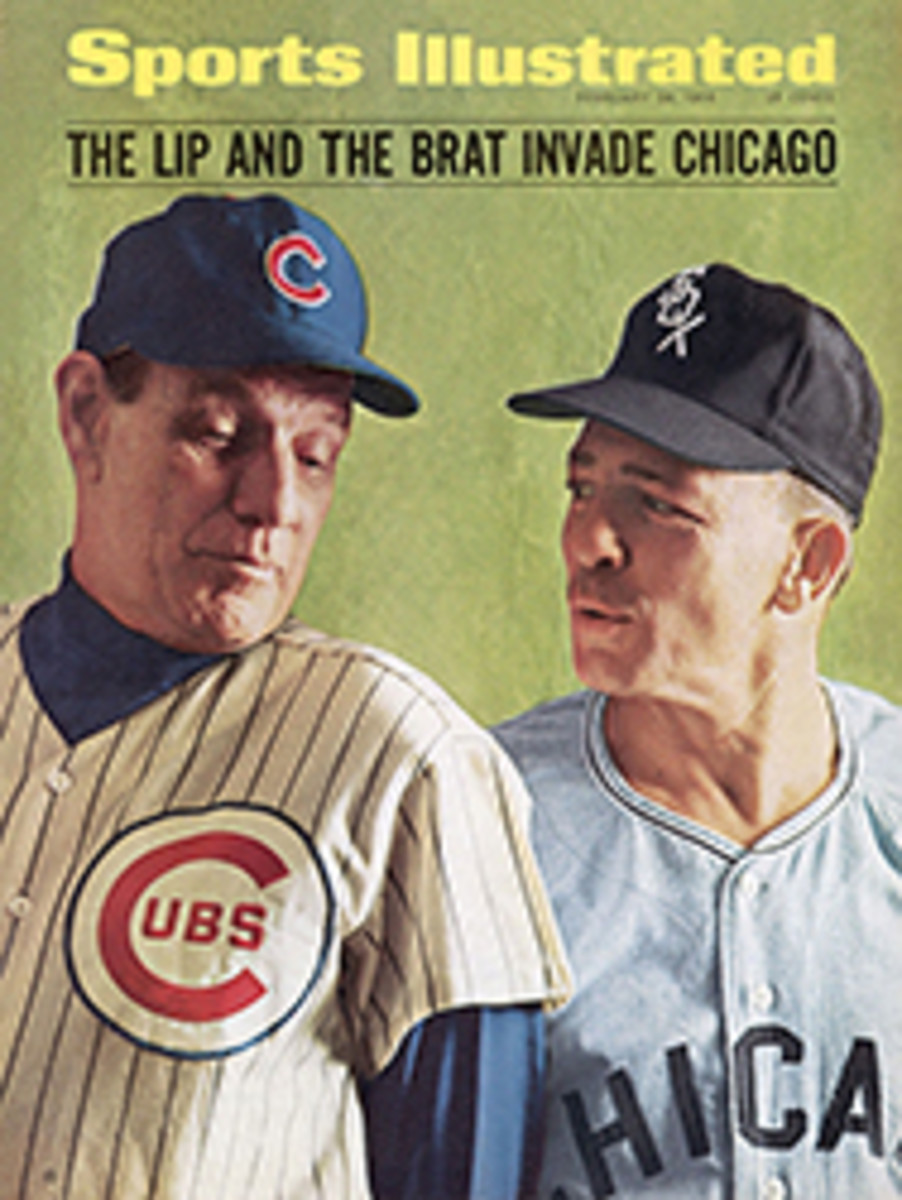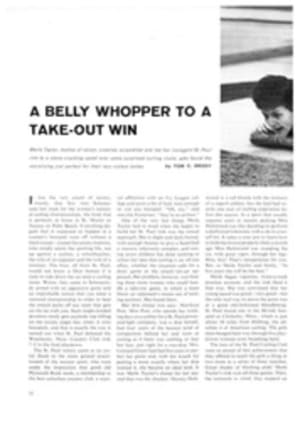
ROTH WAXES SPRING TRAINING
With an artist's eye, a malevolent imagination and a happy sense of the absurd, Arnold Roth went south to spring training. As a baseball fan, he was delighted by the sights, sounds, colors and hullabaloo of the training camps. As a satirist, he was equally delighted by the hokum, the soufflé claims, the out-and-out nonsense. The observations on these and the following pages-illustrations and words—are Roth's wry but affectionate salute to baseball. Left: the backbone of the game is the right word at the right time. Right: calisthenics are performed to assuage those to whom baseball is "ballet without music."
We Believe in the One True Sport
Baseball is a religion. And like any religion of respectable age it rewards its believers with ritual. Any decent religion provides a celebration of seasonal renewal. A good deal of the baseball religion's ritual is lavished on its yearly rebirth—spring training.
We of the true faith greet the opening of spring training by thoroughly reviewing the trades of the winter just ending. The Cardinals begat so-and-so, while Detroit begat somebody else, etc. Naturally, we nervously anticipate that our side begat better than it begave.
But faith is difficult to sustain, and the task of providing sustenance falls to our high priests—the self-flagellants of sportsdom, the baseball writers. They are men of normal appearance and seemingly normal scope of accomplishment. However, our "scribes" are called on to perform feats of exaltation the likes of which the gods themselves would shun. Reports, stories and articles are written by the inane mile. Every word is devoutly consumed by the orthodox. Story angles are constructed on an abundant lack of interesting material. "Can Stan Swkzbswlzi make the jump from junior high baseball to the majors?" we are asked (and told), or "Will the Mets bring back Stengel as player-manager?" It makes no sense. But we fanatics care.
Optimism and insanity run rampant. Trouble is, it's hard to tell which is which. Nearly all managers tell us their teams will "win the pennant." The few managers who have not yet been out in the hot sun for too long are more clear-headed. Their teams are, realistically, merely pennant "contenders." Which means they will play out the entire schedule in the same league—if not the same city.
Things like that only hearten the iconoclasts. It seems to prove what they've said all along, namely, "Managers don't know too much about baseball." But we ascetic believers know better. Managers say such things about their teams' chances because the managers are nice guys. Believers also realize how to qualify science with faith. They know that, despite Durocher's Law, all nice guys don't finish last, since there is only one last place in each league and, at least, three or four nice guys. Anyway, since nothing really counts in the spring, faith consistently moves mountains. Hitters who've never hit over .220 in 15 years in the majors are sure to hit well over .350 this year. Every pitcher will win at least 20 games by the All-Star break. And the season-ticket faithful rush to box offices to reserve pews appropriate for the viewing of miracles.
Spring is the time those fuzzy-minded philanthropists, the team owners, contemplate their prospects. Not the prospects of the team, their own prospects. Team owners can be seen in the stands at exhibition games. On their laps can be seen detailed atlases. The owners are marking cities therein with little flags labeled "possible," "next" and "after next." There's nothing like fresh spring air, unexploited territories, natural greed and a transient franchise to beguile oneself with during a no-count "laugher" on the field. Also in the stands can be seen various civic groups, from diverse environs, with binoculars trained on the owner's pin hand. Groups from franchiseless towns slobber with eternal hope, bent under loads of sacrificial offerings such as new stadium plans, tax exemptions and land grants. Groups from the currently franchised city are accompanied by batteries of lawyers.
This nomadic nature of our objects of worship becomes the crucible in which many beliefs are tested. I am told that there is a prophet in Philadelphia who can be seen wandering the streets in the still of the day, and the stiller of the Philadelphia night, bearing a tattered banner on which is sewn the legend "Save the A's." Lives of holy men have never been a cinch.
But this is all beside the point. It is spring. They are getting ready. They will play again. And it won't be until early July that some heretic wonders aloud whether the Eastern Division of the National Football League can win more than one game from the Western Division this coming fall.
SIX ILLUSTRATIONS
In this allegory we see the veterans (foreground, left) warily evaluating the green rookies, some of whom have already been sent down (right). In the middleground the working press joylessly grinds out copy while the bonus babies arrive in the manner to which they have just become accustomed. Those who must be protected on the parent roster are taken care of by the reluctantly solicitous manager. In the background home-town fans await the season with trepidant curiosity. Commissioners and owners get to see each other and keep an eye on any who might be dissident among them.
Club trainers use strong liniments, whirlpool baths and occult incantations to rescue the perennial sore muscles and torn ligaments. Veterans invariably incur such ailments on the first day of calisthenics. But they miraculously heal the day after the last day of calisthenics. Science prevails again.
New talent is displayed to the press. Everything the club's scouts have discovered is evaluated as "surefire" material—which makes "surefire" springtime news copy. Some players have been "surefire" springtime-copy New Talent for enough years to qualify for the pension.
Basically, spring training is a matter of getting out the kinks.

